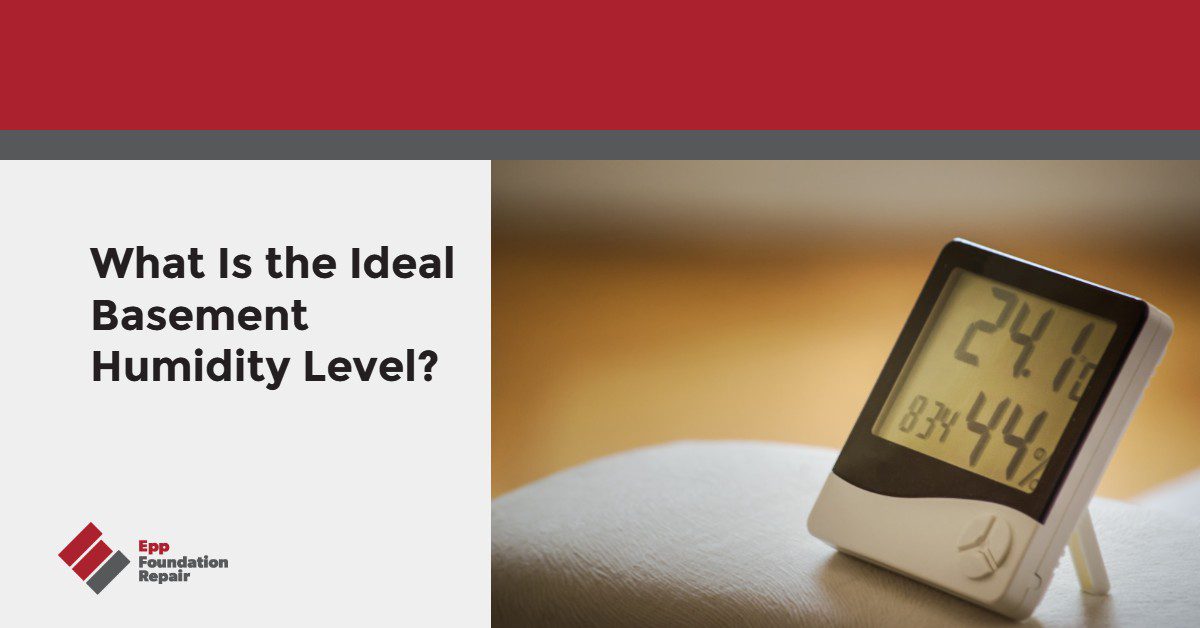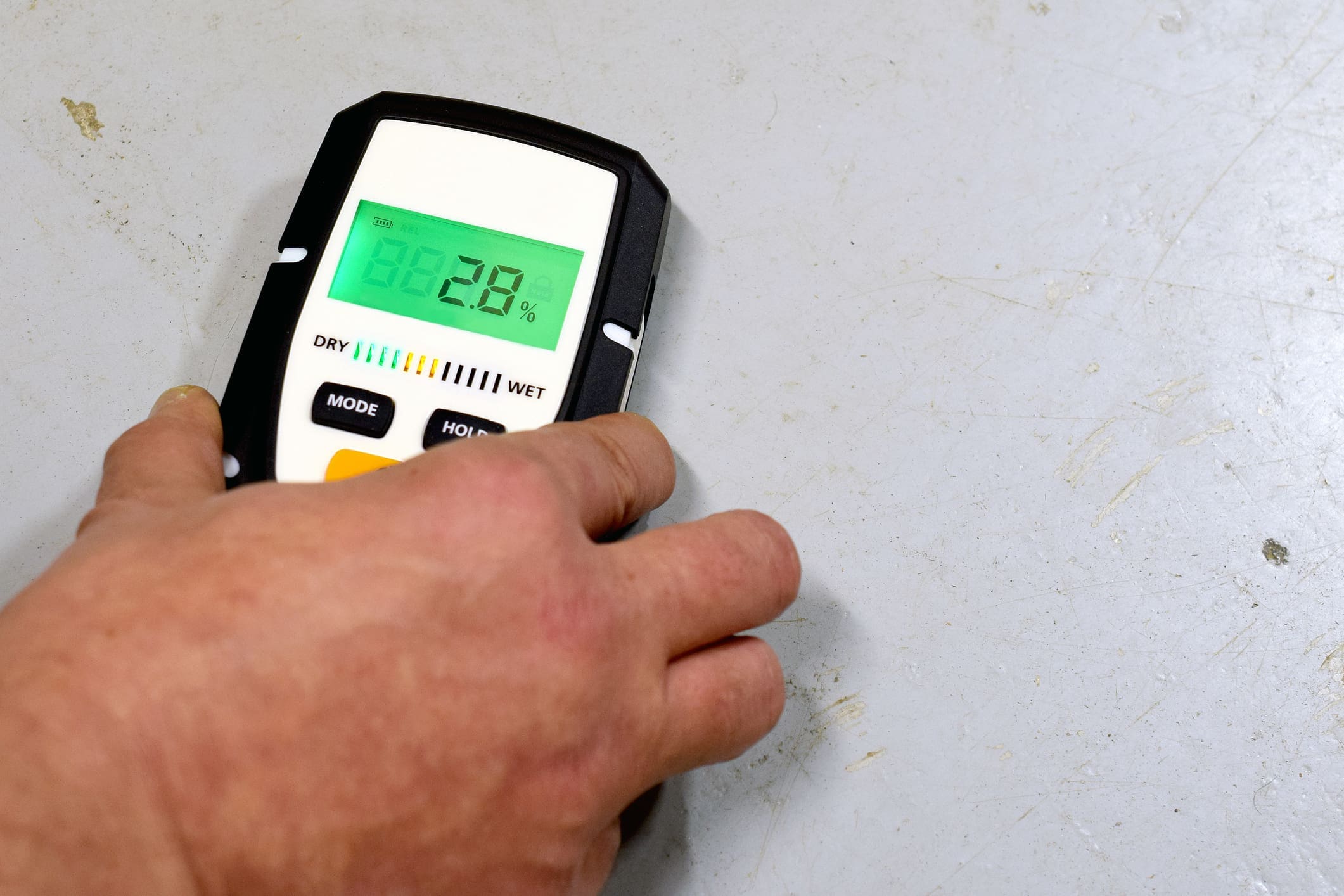What Is Ideal Humidity Level In Basement

Basements, those subterranean spaces in our homes, often grapple with a common foe: excess humidity. This silent intruder can lead to a host of problems, from musty odors and mold growth to damaged belongings and even structural issues. Figuring out the ideal humidity level and maintaining it is crucial for a healthy and comfortable home. Let's explore how to determine the right humidity for your basement and what steps you can take to achieve it.
Understanding the Problem: The Damp Basement Dilemma
Many homeowners discover their basements are damp, musty smelling, or even visibly wet. This is often because basements are naturally cooler and more susceptible to moisture infiltration from the surrounding soil. High humidity creates a breeding ground for mold and mildew, which can trigger allergies and respiratory problems. It can also warp wooden furniture, rust metal objects, and generally make the basement an unpleasant space to be in. Ignoring high humidity in your basement is not an option; it's a problem that needs addressing.
Step 1: Diagnosing the Humidity Level
Before you can fix a problem, you need to understand its extent. The first step is to accurately measure the humidity level in your basement.
Tools You'll Need:
- A hygrometer (also known as a humidity meter): These are readily available at hardware stores or online. Digital hygrometers are generally more accurate.
The Process:
- Place the hygrometer in your basement. Ideally, place it in a central location, away from walls and any obvious sources of moisture (like a leaking pipe).
- Wait 24 hours. This allows the hygrometer to acclimate to the basement environment and provide an accurate reading.
- Record the humidity level. Note the percentage reading on the hygrometer.
What's the Ideal Humidity Level?
The ideal relative humidity (RH) for a basement is between 30% and 50%. This range prevents mold growth and minimizes moisture-related damage. Aiming for around 45% is a good target.
- Above 60% RH: This indicates a humidity problem that needs immediate attention.
- Between 50% and 60% RH: This is borderline and warrants further investigation and preventive measures.
- Below 30% RH: While not as common, very low humidity can also cause problems, such as drying out wood and causing static electricity. However, this is rarely an issue in basements.
Step 2: Identifying the Sources of Humidity
Once you've confirmed that your basement has a humidity problem, the next step is to identify the sources of moisture. Common culprits include:
- Leaky pipes or fixtures: Even small drips can significantly contribute to humidity over time.
- Cracks in the foundation: These allow moisture from the surrounding soil to seep into the basement.
- Poor ventilation: Lack of airflow traps moisture and prevents it from evaporating.
- Groundwater seepage: This is more common in areas with high water tables or poor drainage.
- Condensation: Warm, humid air coming into contact with cold basement surfaces can cause condensation.
- Open vents or windows: During humid weather, these can introduce moisture into the basement.
- Damp clothes/laundry: Drying clothes indoors, especially in an unventilated basement, releases a lot of moisture.
Investigating the Sources:
- Visually inspect for leaks. Check all pipes, faucets, and water heaters for any signs of drips or water stains. Look for water stains on the walls and floor, especially near cracks.
- Feel the walls and floor. Dampness to the touch indicates moisture intrusion.
- Check the gutters and downspouts. Ensure they are clean and properly directing water away from the foundation.
- Look for condensation. Check cold surfaces like pipes and concrete walls for condensation.
- Monitor after rain. Check for new leaks or dampness after heavy rainfall.
Step 3: Simple DIY Fixes
Depending on the source and severity of the problem, you may be able to implement some simple DIY fixes to lower the humidity in your basement.
1. Improve Ventilation:
Open windows (when the weather is dry): If the outdoor humidity is lower than the indoor humidity, open windows to allow for natural ventilation. Use fans: Circulating air with fans can help evaporate moisture and prevent condensation. Place fans to blow air across damp surfaces.
2. Seal Cracks and Leaks:
Seal small cracks in the foundation: Use a concrete crack sealant or epoxy injection kit to seal small cracks in the foundation walls and floor. Repair leaky pipes: If you're comfortable with basic plumbing, you can attempt to repair minor leaks yourself. Otherwise, call a plumber.
3. Improve Drainage:
Ensure gutters and downspouts are functioning properly: Clean out debris and make sure they are directing water away from the foundation. Improve grading around the foundation: The ground should slope away from the house to prevent water from pooling near the foundation.
4. Use a Dehumidifier:
Choose the right size dehumidifier: Select a dehumidifier that is appropriately sized for the square footage and humidity level of your basement. Consult the manufacturer's guidelines. Empty the dehumidifier regularly: Regularly empty the water collection tank or connect the dehumidifier to a drain hose for continuous drainage. Clean the dehumidifier: Clean the dehumidifier's filter regularly to maintain its efficiency.
5. Insulate Cold Surfaces:
Insulate cold pipes: Wrap cold water pipes with foam insulation to prevent condensation. Consider insulating the basement walls: This can help reduce condensation and improve the overall comfort of the basement. However, consult with a professional before insulating basement walls to ensure proper insulation techniques are used to prevent moisture problems.
6. Manage Indoor Activities:
Avoid drying clothes indoors: If possible, dry clothes outdoors or use a dryer that vents to the outside. Ventilate bathrooms: Use the bathroom exhaust fan when showering or bathing to remove excess moisture.
Step 4: Monitoring and Evaluation
After implementing these DIY fixes, it's crucial to monitor the humidity level in your basement regularly to see if the changes are effective. Use your hygrometer to take readings every few days and track the progress.
If the humidity level is gradually decreasing and staying within the ideal range (30-50%), then your efforts are likely successful. Continue to monitor the situation and make adjustments as needed.
If the humidity level remains high despite your efforts, it's time to consider professional help.
When to Call a Professional
There are situations where DIY fixes are not enough, and professional intervention is necessary. Here are some signs that you need to call a professional:
- Persistent high humidity: If the humidity level remains above 60% despite your best efforts.
- Visible mold growth: Mold is a sign of serious moisture problems and requires professional remediation.
- Standing water: Standing water in the basement indicates a significant water intrusion problem.
- Structural damage: Cracks in the foundation, bowing walls, or other signs of structural damage should be addressed by a structural engineer or foundation repair specialist.
- Suspected groundwater seepage: If you suspect groundwater seepage, you may need to install a sump pump or other drainage system.
- Health concerns: If you or your family members are experiencing health problems that you suspect are related to mold or humidity, consult with a doctor and a mold remediation specialist.
What kind of professional to call?
- Plumber: For leaky pipes or fixtures.
- Foundation repair specialist: For cracks in the foundation or structural damage.
- Mold remediation specialist: For mold growth.
- Waterproofing contractor: For groundwater seepage or persistent water intrusion.
- HVAC technician: For ventilation issues or dehumidifier problems.
Preventative Measures for the Future
Once you've addressed the immediate humidity problem, it's important to take preventative measures to keep your basement dry and healthy in the future.
- Regularly inspect your basement for leaks and cracks.
- Maintain your gutters and downspouts.
- Ensure proper drainage around your foundation.
- Use a dehumidifier as needed.
- Ventilate your basement regularly.
- Avoid storing moisture-sensitive items in the basement.
- Consider installing a vapor barrier on the walls and floor.
By understanding the ideal humidity level, identifying the sources of moisture, and implementing appropriate fixes, you can create a dry, healthy, and comfortable basement that adds value to your home. Remember to monitor the humidity level regularly and don't hesitate to call a professional if you encounter persistent problems. A proactive approach will protect your home from the damaging effects of excess humidity and ensure a healthier living environment for you and your family. Remember, a dry basement is a happy basement!










